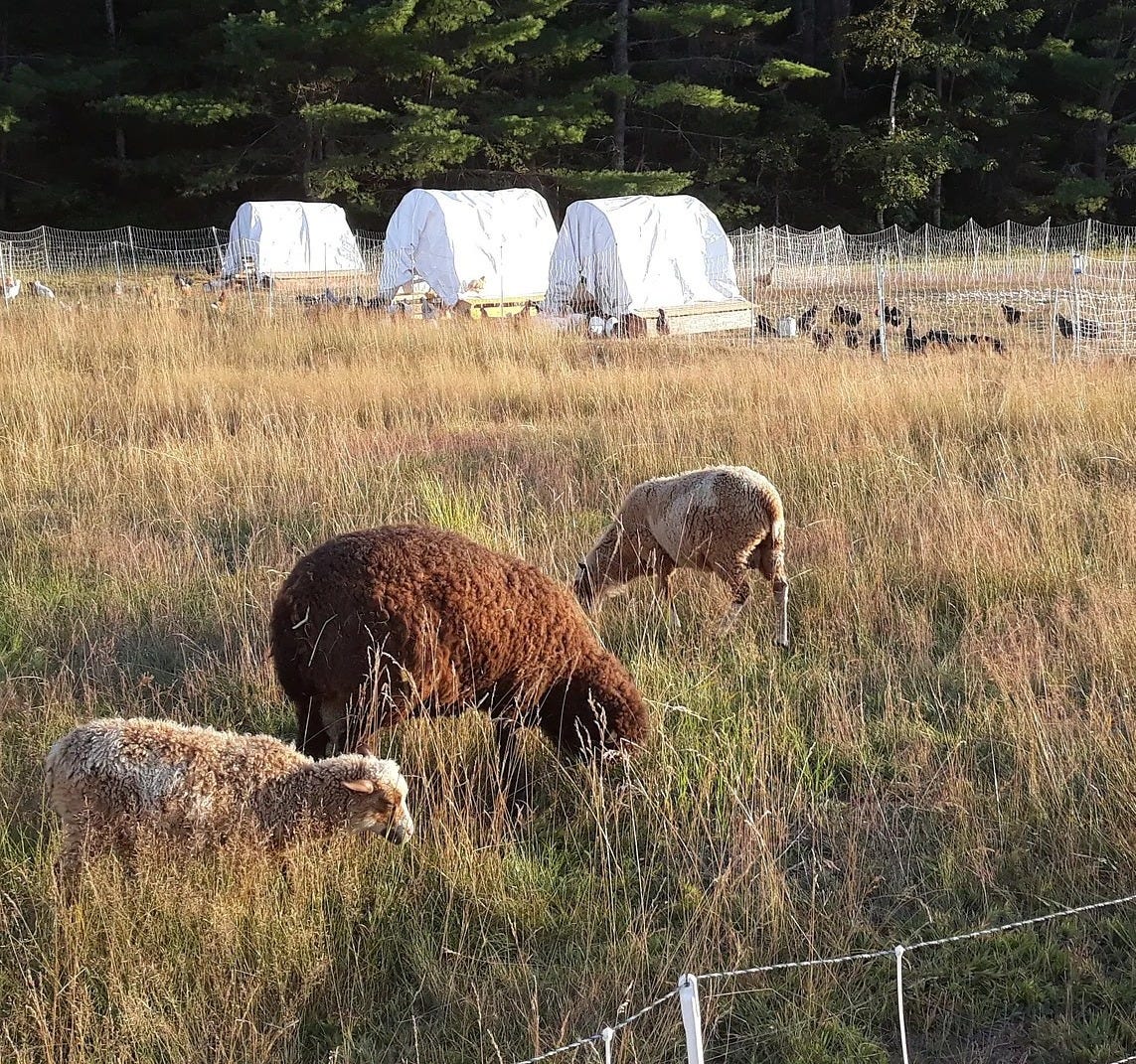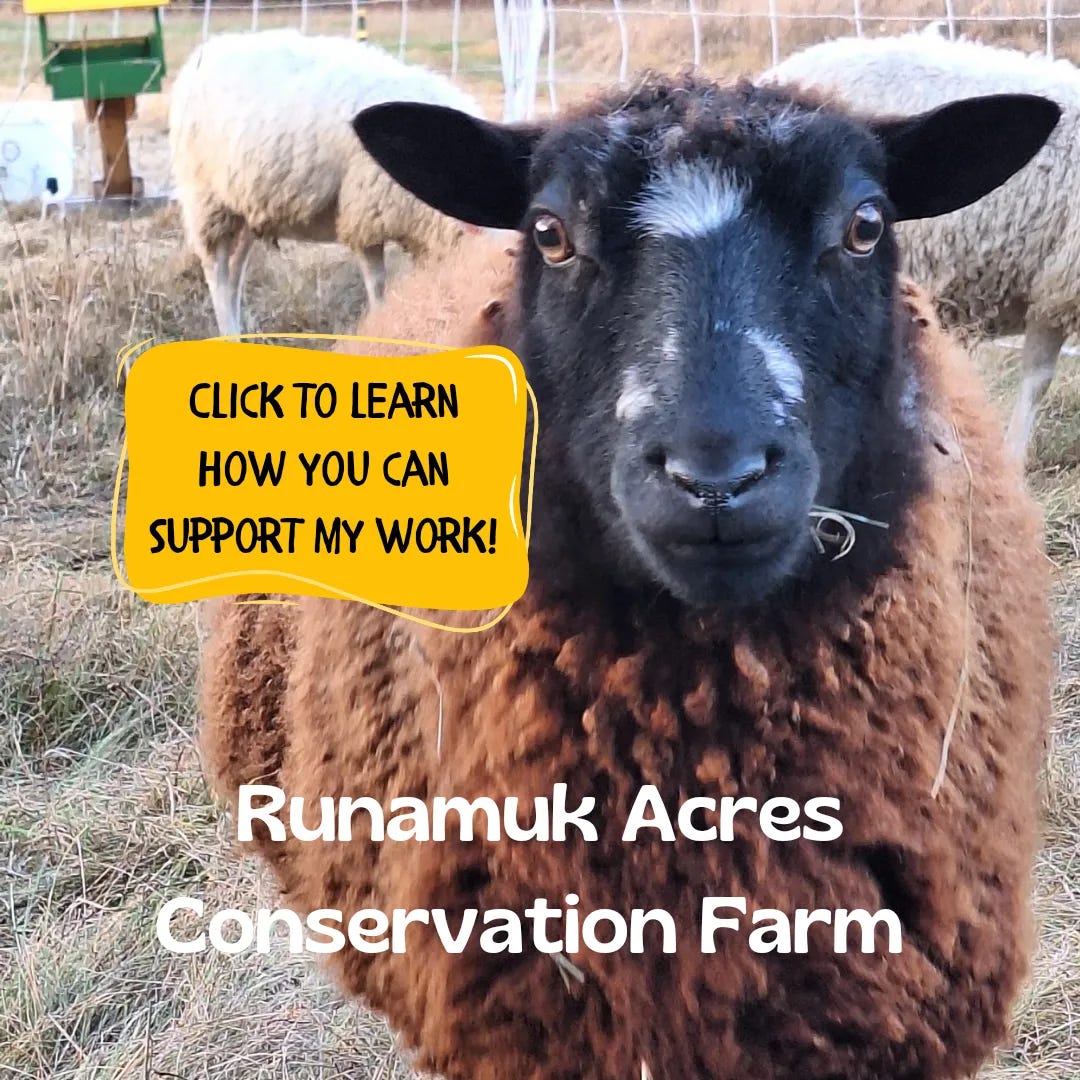How I Became a Shepherdess
Sheep changed my life in a subtle but powerful way, as I was forced to learn and grow as both human and farmer.
The 12am alarm jangled obnoxiously as I reached for my phone on the nightstand. Rubbing the sleep out of my eyes, I squinted and tried to focus on the screen to pull up the Kasa-app for the cameras in the Sheep-Shed. Lambing season is a roller coaster for the emotions and I’ve been thinking a lot lately about how I became a shepherdess in the first place.
Welcome to the latest Updates From the Farm! If you are new here, I invite you to check out my About page to learn what this is, who I am and why I am doing this. Or just dive right in! At “Runamuk Acres” you’ll find the recantings of one lady-farmer and tree-hugging activist from the western mountains of Maine. #foodieswanted
In This Post:
This One’s for Megan!
My First-Ever Sheep
A Rough Transition
Ghirardelli
Meat or Wool?
How I Became a Shepherdess
With just days remaining till their due-date, I’ve been closing the girls in their shed at night to prevent any babies from being born outside in the snow and cold. Like any expectant parent, I’m a bundle of nerves—anxiously checking the cameras throughout the day and night. In the 7 years I’ve been keeping sheep, I’ve learned the hard way that diligence is the key to ensuring my lambs survive the first few weeks of life.
night-video
This One’s for Megan!
I love it when my readers pose questions to me, so this post is a response to
’s inquiry about how I came to take on sheep in the first place.In our group chat, Megan mentioned she’d always dreamed of having her own flock, but has no clue about how to get started. This post will share the story of how I became a shepherdess, and I’ll write a corresponding piece for the Homesteaders’ Handbook specifically about how to get started with your very own flock of sheep.
Stay tuned for more on that coming soon!
My First-Ever Sheep
It all started when I bought the farm…
After an agonizingly long and arduous journey, I closed on the house and the accompanying 53-acres on June 27th, 2018. Having been all but homeless, I wasted no time moving my wayward farming operation to 344 School Street in New Portland, Maine.
I’d grown a broad community around myself and people were happy for me. Instead of a house-warming, we held a big farm-warming party. Friends, neighbors and community members gave gifts and donations in celebration.
With a 10-acre field out back, it wasn’t long before we were offered a pair of Romney-crossed sheep by some friends from 4H. Their girls were going off to college and they were downsizing their flock. These 2 were special to the girls and the family wanted them to retire to Runamuk.
Up till that point I’d done well to turn down the many free farm-animals I’d been offered, having learned my lesson about free-livestock years earlier. Always a softee when it comes to kids, however, this was one request I couldn’t refuse.
And so—I proceeded to construct a shelter for my first-ever sheep!
A Rough Transition
The pair were brought to to the farm in October of 2018.
With limited time and resources, the shelter I’d built for them was very “rustic”, and though I fed and watered them diligently, the 8 year old ewes did not fare well.
That was the winter I learned a lot about the health and care of sheep.
I learned how to give an injection of antibiotics. I learned about FAMACHA and body condition. Ultimately, I think they missed their girls and declined as a result of such a big change in their existence.
The first one went down in early March, and since you can’t have just one lone sheep, I quickly brought home a friend to keep her company.
Ghirardelli
At that time I was still working in the Call Center at Johnny’s Selected Seeds and a colleague there was intensely passionate about her Finnsheep, advocating their hardiness, temperament and proliferation. After doing my own research, looking into a number of breeds, I followed my friends’ example and when I made the move to invest in breeding stock, I went with Finns.
In March of 2019, Ghirardelli came to Runamuk to live with the Romney.
A couple months later when the snow had melted, I made the trek to Olde Haven Farm in Chelsea, Maine.
One of the top 10 breeders for Finnsheep in the United States, I’d arranged to purchase a pair of purebred Finn-lambs to add to my burgeoning flock.
While I don’t need registered animals for my purposes, I knew I wanted good genetics and top-notch stock. Extensive research led me to the folks at Olde Haven and the animals I’ve purchased from them over the years have been worth every penny.
Meat or Wool?
Looking back, it’s hard to believe it’s been 7 years since those first sheep came to Runamuk. They changed my life in a subtle but powerful way, as I was forced to learn and grow as both human and farmer.
Before sheep came into my life, I was committed to promoting pollinators as my mission.
Once I began practicing rotational grazing with my sheep, however, I quickly realized I could take my conservation efforts even deeper by focusing on soil microbial life and invertebrates in general.

People often ask me what we raise the sheep for—meat or wool?
The answer is neither: I raise sheep as a means of regenerating the 10-acre field on my property.
It’s a means of feeding the microbial life within the soil to promote the health and well-being of the plants and the wildlife dependent upon the habitat.
That’s usually where I loose them, lol. Their eyes glaze over and they tune out as I explain how I rotate my flock around the field to stimulate plant-growth and fertilize the soil. Thriving plants create an abundant oasis in the midst of the endless Maine forest. As a result, wildlife abounds at the Runamuk Acres Conservation Farm.
THAT is why I keep sheep.
I keep sheep to feed the soil and thus feed and support the community around me. Be they single-celled amoeba, turkey, deer or even the human animal, we are all reliant on our soils for our very existence.
Ultimately, THAT is my mission—though I do allow the sheep to breed every year in order to offset the cost of keeping them. We sell a few lambs every spring and take a handful to harvest in the fall. I sell some of that harvest to local customers, but mostly we stock the freezer to feed our own household.
How I Became a Shepherdess
And there you have it—the story of how I became a shepherdess!
Like all of the very best things in my life, I didn’t start out wanting to be a shepherdess, but was chosen to do so—called to it, you might say.
I was surprised by the personable woolly beasts and the way sheep stole my heart. There’s something profound about working with livestock like this. Through my rotational grazing efforts, I’ve come to know both sheep and the field we work upon quite intimately. It’s intrinsically rewarding to me on a deeply personal level and I intend to continue working with them for a good many years yet.
No matter how you subscribe, I thank you for reading.
Let’s keep growing, together.🌱
Sending love and good juju to you and yours.
Your friendly neighborhood farmer,
Sam
Thank you for following along with the story of this lady-farmer! It is truly a privilege to live this life serving my family and community, and protecting wildlife through agricultural conservation. If you found this valuable, please consider Restacking so more people can see it!








This is lovely! I am a sheep veterinarian and shepherd myself. I really relate to the transformative power of these amazing animals and our relationships with them. I have just started a substack entirely devoted to sheep! I hope you will take a look: leaningonourcrooks.substack.com
I don’t know if you mentioned shearing the sheep and selling the wool. Must still be a market.